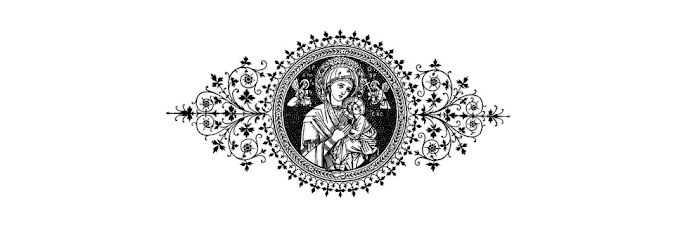Ghent altarpiece
Ever since sin entered the world, man has need of the lamb. Without the lamb he never could have inherited heaven, but would have been, for all eternity, an object of God’s just anger. In the very beginning of the world, the just Abel drew down upon himself the mercy of God by offering on a sod-made altar the fairest lamb of his flock: he himself was sacrificed, as a lamb, by the murderous hand of his brother, and thus became a type of our divine Lamb, Jesus, who was slain by His own Israelite brethren. When Abraham ascended the mountain to make the sacrifice commanded him by God, he immolated, on the altar prepared for Isaac, the ram he found amidst the thorns. Later on, God spoke to Moses, and revealed to him the Pasch: it consisted of a lamb that was to be slain and eaten. A few days back, we had read to us the passage from the Book of Exodus where God gives this rite to His people. The Paschal Lamb was to be without blemish; its blood was to be sprinkled as a protection against the destroying Angel, and its flesh was to be eaten. This was the first Pasch. It was most expressive as a figure, but void of reality. For fifteen hundred years was it celebrated by God’s people, and the spiritual-minded among the Jews knew it to be the type of a future Lamb.
In the age of the great prophets, Isaias prayed God to fulfill the promise He made at the beginning of the world. We united in this his sublime and inspired prayer, when, during Advent, the Church read to us his magnificent prophecies. How fervently did we repeat those words: “Send forth, O Lord, the Lamb, the ruler of the earth!” This Lamb was the long-expected Messias; and we said to ourselves: Oh what a Pasch will that be, wherein such a lamb is to be victim! What a feast wherein He is to be the food of the feasters!
“When the fulness of time came and God sent His Son” upon our earth, this Word made Flesh, after thirty years of hidden life, manifested Himself to men. He came to the river Jordan, where John was baptizing. No sooner did the holy Baptist see Him, than he said to his disciples: “Behold the Lamb of God! Behold Him who taketh away the sin of the world!” By these words the saintly Precursor proclaimed the Pasch; for he was virtually telling men that the earth then possessed the true lamb, the Lamb of God, of whom it had been in expectation four thousand years. Yes, the lamb who was fairer than the one offered by Abel, richer in mystery than the one slain by Abraham on the mount, and more spotless than the one the Israelites were commanded to sacrifice in Egypt, had come. He was the lamb so earnestly prayed for by Isaias; the lamb sent by God Himself; in a word, the Lamb of God. A few years would pass, and then the immolation. But three days ago we assisted at His sacrifice; we witnessed the meek patience wherewith He suffered His executioners to slay Him; we have been laved with His precious Blood, and it has cleansed us from all our sins.
[...] Nor does the mystery of the lamb end here. Isaias besought God to “send the lamb” who was to be “the ruler of the earth.” He comes, therefore, not only that He may be sacrificed, not only that He may feed us with His sacred Flesh, but likewise that He may command the earth and be King. Here, again, is our Pasch. The Pasch is the announcement of the reign of the lamb. The citizens of heaven thus proclaim it: “Behold,the lion of the tribe of Juda, the root of David hath conquered!” But if He be the lion, how is He the lamb? Let us be attentive to the mystery. Out of love for man, who needed redemption, and a heavenly food that would invigorate, Jesus deigned to be as a lamb: but He had, moreover, to triumph over His own and our enemies; He had to reign, for “all power was given to Him in heaven and in earth.” In this His triumph and power, He is a lion; nothing can resist Him; His victory is celebrated this day throughout the world. Listen to the great deacon of Edessa, St. Ephrem: “At the twelfth hour, He was taken down from the Cross as a lion that slept.” Yea, verily, our lion slept; for His rest in the sepulcher “was more like sleep than death,” as St. Leo remarks. Was not this the fulfillment of Jacob’s dying prophecy? This patriarch, speaking of the Messias that was to be born of his race, said: “Juda is a lion’s whelp. To the prey, my son, thou art gone up! Resting thou hast couched as a lion. Who shall rouse him?” He has roused Himself, by His own power. He has risen; a lamb for us, a lion for His enemies; thus uniting, in His Person, gentleness and power. This completes the mystery of our Pasch: a lamb, triumphant, obeyed, adored. Let us pay Him the homage so justly due. Until we be permitted to join, in heaven, with the millions of Angels and the four-and-twenty Elders, let us repeat, here on earth, the hymn they are forever singing: “The lamb that was slain, is worthy to receive power, and divinity, and wisdom, and strength, and honor, and glory, and benediction!”



















